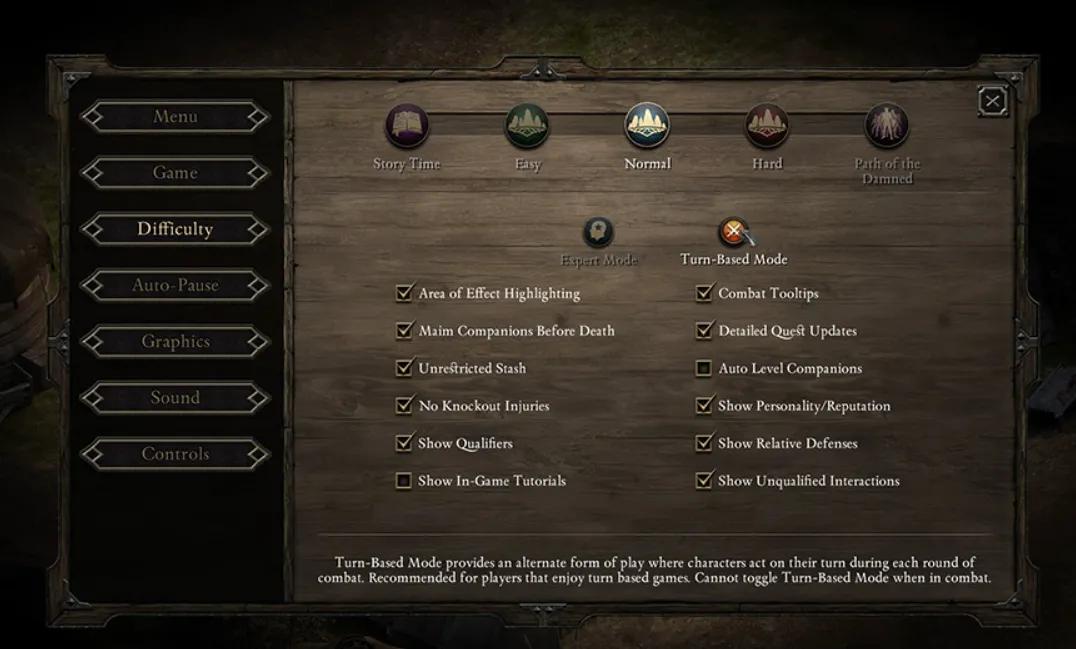Obsidian begins public testing for a new Pillars of Eternity turn-based mode, giving players the option to toggle between real-time and tactical play.
Obsidian Entertainment is preparing a significant update for its 2015 RPG Pillars of Eternity, as the studio opens a public beta for a turn-based mode on November 5. The option to shift from real-time pausable combat to a structured, turn-driven system has been shaped by community interest and lessons learned from Pillars of Eternity II: Deadfire, and arrives years after launch as the studio revisits a key part of the series’ identity. Players will be able to opt into the test on Steam and Xbox PC platforms, with the feature expected to evolve through active feedback and continued patching.
The update marks one of the most ambitious mechanical shifts the game has received since release. Originally designed around real-time party management, Pillars built its combat pace and character abilities around action flow and positioning. The new mode interrupts that tempo, breaking encounters into defined turns influenced by character speed. Obsidian’s approach does not abandon the original format, instead letting players switch between modes in the options menu or select their preference at the start of a campaign. That flexibility speaks to a careful recalibration rather than a forced reinvention. Real-time systems remain intact for those who prefer them, while turn-based players gain a more tactical layer consistent with modern CRPG trends.
The studio outlined several adjustments accompanying the mode. Movement and actions now hinge on a speed-driven initiative system, lending weight to character builds previously tuned for real-time play. Free actions such as weapon swaps and potion use can be taken without consuming a turn, though they are limited to preserve balance. Combat pacing has been sharpened through higher lethality, making engagements briefer and more decisive. These changes aim to support the original design instead of overwriting it, maintaining the party-focused challenge while offering a more methodical alternative.
Obsidian noted that players should expect bugs and tuning changes throughout the beta period. The studio did not attach a fixed end date to the test, indicating an iterative process before the feature becomes a permanent part of the game. That timeline aligns with how Deadfire’s turn-based mode matured, evolving across updates as the community stress-tested encounters and class synergies.
The timing underscores a wider moment for traditional RPGs. Larian’s Baldur’s Gate 3 helped re-center turn-based design in the mainstream RPG space, demonstrating how slower-paced tactical systems can succeed commercially and critically. Josh Sawyer, who directed both Pillars titles, touched on that influence when discussing future possibilities for the franchise. He has stated that a hypothetical Pillars of Eternity 3 would likely adopt a 3D presentation and absorb lessons from recent genre standouts. While no sequel is confirmed, the turn-based beta reflects that forward-looking posture.
Obsidian remains active elsewhere in the setting. The studio launched Avowed earlier this year, extending the world of Eora into a first-person action-RPG. That release, paired with ongoing support for Pillars, suggests the team is still investing in the broader universe even without a new mainline installment in development. Revisiting the original game through a modern, evolving combat mode keeps the series present for long-time players and newcomers exploring the franchise after Avowed.
The beta offers long-standing fans a chance to re-engage with a classic in a fresh format, while newer players get a version shaped by a decade of genre progress. For Obsidian, it is an opportunity to refine its legacy work without overshadowing it, presenting another way into a world that helped define the studio’s modern reputation.

Comments